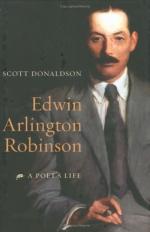|
This section contains 3,769 words (approx. 13 pages at 300 words per page) |

|
SOURCE: “Redemption for the Man of Iron,” in The Personalist, Vol. X411, No. 1, January, 1962, pp. 46-56.
In the following essay, Crowder examines Robinson's concept of redemption as revealed in Talifer.
… Artistic experience is, deep down, a religious experience, because the world art lives in cannot be made habitable save by religion alone.1
Malcolm Boyd says that “all media of communication are theological.”2 Not only in such deliberate vehicles as The Cocktail Party and The Confidential Clerk but in such plays as Separate Tables and A Streetcar Named Desire religious truth can reach the sensitive spectator. The converse, however, is also true: for the person who is not sensitive to religion, a plot even intentionally concerned with the kerygma can be nothing conceivably more than mere entertainment.
The thesis presents itself in the other arts as well as in drama. A case in point is Edwin Arlington Robinson's book-length...
|
This section contains 3,769 words (approx. 13 pages at 300 words per page) |

|


